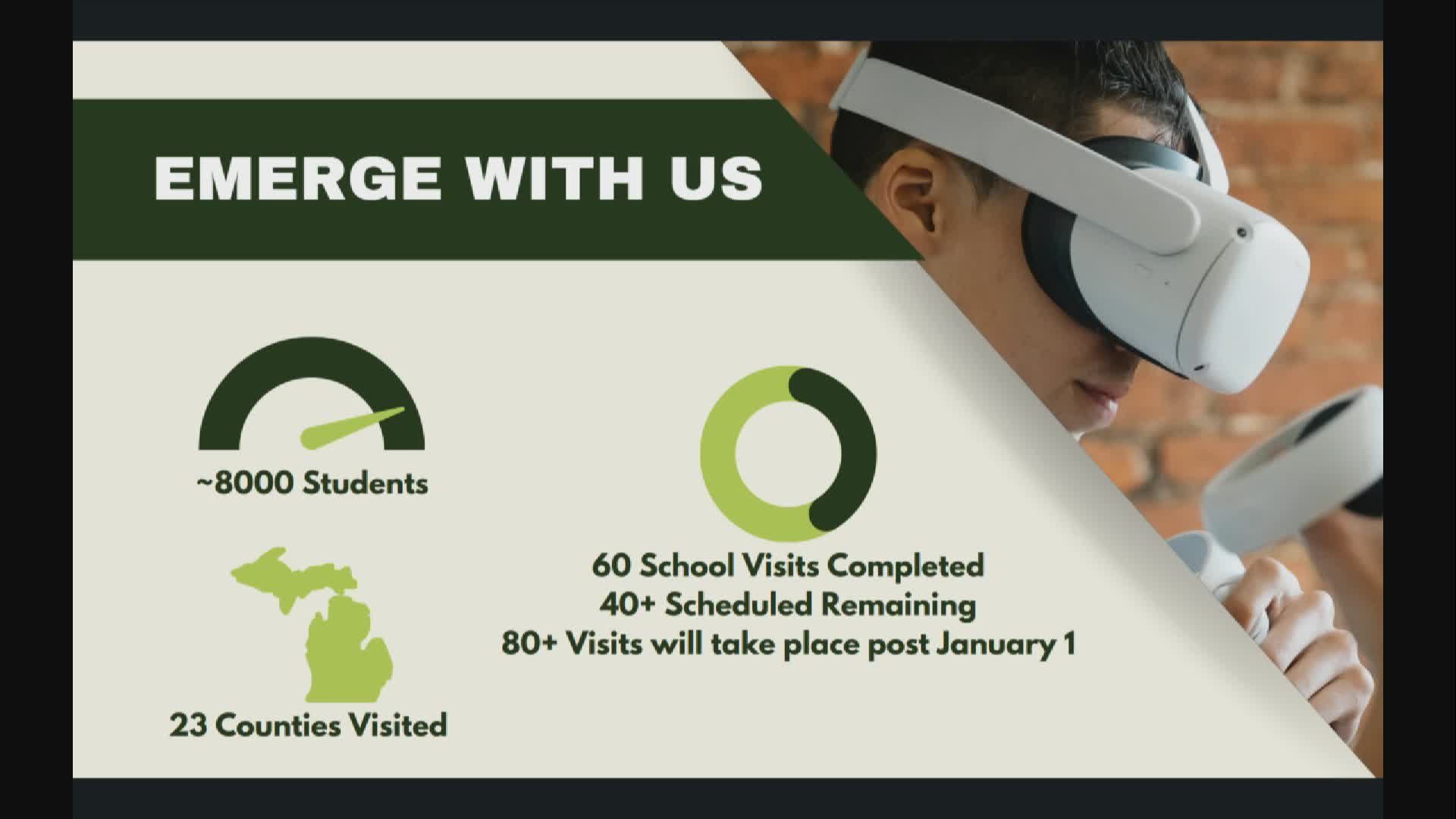Education advocates discuss extended reality for career exploration in schools
April 29, 2025 | Appropriations - School Aid and Education, Appropriations, House of Representative, Committees , Legislative, Michigan
This article was created by AI summarizing key points discussed. AI makes mistakes, so for full details and context, please refer to the video of the full meeting. Please report any errors so we can fix them. Report an error »

In a recent meeting of the Michigan House of Representatives, discussions centered on the innovative use of extended reality (XR) technologies in career exploration within the education system. The session highlighted the potential of XR, which encompasses virtual reality (VR), augmented reality (AR), and mixed reality (MR), to enhance students' understanding of various career paths.
XR technologies offer immersive experiences that can significantly benefit technical education and career exploration. The meeting emphasized the acronym DICE, which identifies scenarios where XR can be particularly effective: situations that are dangerous, impossible to recreate, counterproductive, or costly in a traditional classroom setting. For instance, VR can simulate complex medical procedures without the risks associated with real-life practice, allowing students to gain valuable experience in a safe environment.
The current application of XR in education focuses on three main areas: career exploration, skills development, and traditional STEM education. Students can engage in short simulations across more than 40 career clusters, providing them with a taste of different professions. Additionally, longer simulations allow for deeper skill development, fostering muscle memory and practical experience.
The meeting also addressed significant challenges in the current educational landscape. Statistics reveal that 80% of college students change their majors at least once, often leading to extended graduation times and increased student debt, which now totals nearly $2 trillion in the U.S. Furthermore, while many educators believe they are adequately preparing students for the workforce, a substantial number of employers disagree, indicating a disconnect between education and job readiness.
Traditional career exploration methods, such as assessments, job shadowing, and internships, were acknowledged as valuable but limited. Accessibility issues and the lack of hands-on experiences often hinder students' ability to fully engage with potential careers. The meeting underscored the need for more immersive and realistic career exploration opportunities to better align students' expectations with the realities of the workforce.
In conclusion, the discussions at the Michigan House of Representatives meeting highlighted the transformative potential of XR technologies in education. By addressing existing gaps in career exploration and providing students with immersive experiences, XR could play a crucial role in preparing the next generation for the workforce. As the education system evolves, the integration of these technologies may help bridge the gap between education and employment, ultimately benefiting both students and employers.
XR technologies offer immersive experiences that can significantly benefit technical education and career exploration. The meeting emphasized the acronym DICE, which identifies scenarios where XR can be particularly effective: situations that are dangerous, impossible to recreate, counterproductive, or costly in a traditional classroom setting. For instance, VR can simulate complex medical procedures without the risks associated with real-life practice, allowing students to gain valuable experience in a safe environment.
The current application of XR in education focuses on three main areas: career exploration, skills development, and traditional STEM education. Students can engage in short simulations across more than 40 career clusters, providing them with a taste of different professions. Additionally, longer simulations allow for deeper skill development, fostering muscle memory and practical experience.
The meeting also addressed significant challenges in the current educational landscape. Statistics reveal that 80% of college students change their majors at least once, often leading to extended graduation times and increased student debt, which now totals nearly $2 trillion in the U.S. Furthermore, while many educators believe they are adequately preparing students for the workforce, a substantial number of employers disagree, indicating a disconnect between education and job readiness.
Traditional career exploration methods, such as assessments, job shadowing, and internships, were acknowledged as valuable but limited. Accessibility issues and the lack of hands-on experiences often hinder students' ability to fully engage with potential careers. The meeting underscored the need for more immersive and realistic career exploration opportunities to better align students' expectations with the realities of the workforce.
In conclusion, the discussions at the Michigan House of Representatives meeting highlighted the transformative potential of XR technologies in education. By addressing existing gaps in career exploration and providing students with immersive experiences, XR could play a crucial role in preparing the next generation for the workforce. As the education system evolves, the integration of these technologies may help bridge the gap between education and employment, ultimately benefiting both students and employers.
View full meeting
This article is based on a recent meeting—watch the full video and explore the complete transcript for deeper insights into the discussion.
View full meeting
